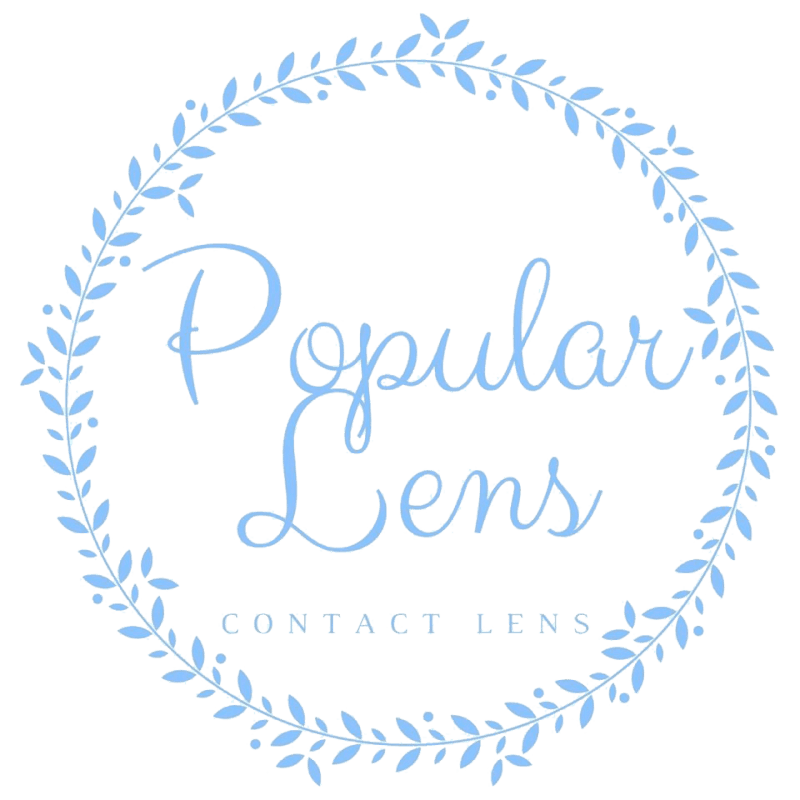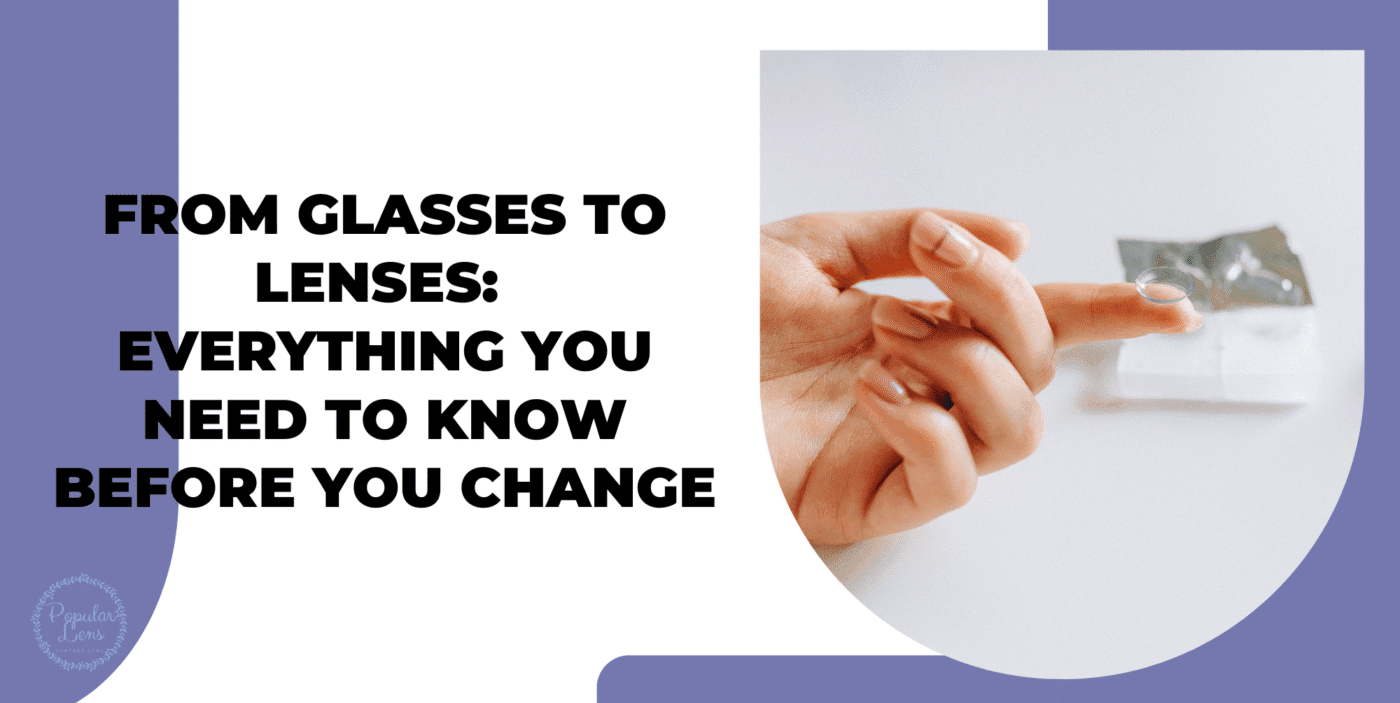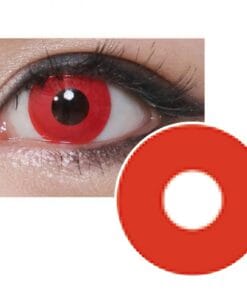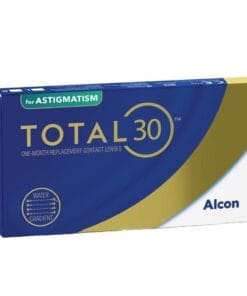From Glasses To Lenses
From Glasses to Lenses: Everything You Need to Know Before You Change
From glasses to lenses does not have to be an intimidating move for new users. There are many ways to get used to this new switch. Read more to find out.
From Glasses To Lenses 1: Why People Make the Switch
The need for more flexibility and simplicity drives many people who change eyeglasses for contact lenses. Particularly when engaging in sports, dance, or exercises where they may slip off, blur over, or obstruct, glasses can feel limited.
Contact lenses, however, give a larger field of vision free from frame blockage, hence improving not just comfort but also peripheral awareness. Many people also feel more self-assured and self-confident without spectacles changing their face traits. For those who want a glasses free look for social events or work surroundings, the aesthetic attraction of contact lenses is a major driving force.
-
Product on sale
 GEOLICA CRAZY LENS RED CP-F331.82USD
GEOLICA CRAZY LENS RED CP-F331.82USD -
Product on sale
 GEOLICA CRAZY LENS WHITE CP-F131.82USD
GEOLICA CRAZY LENS WHITE CP-F131.82USD -
 Miru 1Month Menicon50.91USD
Miru 1Month Menicon50.91USD -
 Miru 1-Day Menicon Upside Daily Disposable Lenses52.73USD
Miru 1-Day Menicon Upside Daily Disposable Lenses52.73USD -
Product on sale
 Miru 1-Day Menicon Flat Pack Daily Disposable LensesOriginal price was: 52.73USD.30.00USDCurrent price is: 30.00USD.
Miru 1-Day Menicon Flat Pack Daily Disposable LensesOriginal price was: 52.73USD.30.00USDCurrent price is: 30.00USD. -
 Alcon TOTAL30 for Astigmatism Monthly52.73USD
Alcon TOTAL30 for Astigmatism Monthly52.73USD
Contact lenses remove the bother of lenses fogging up — a frequent irritation with glasses for those in humid climates or wearing face masks frequently. Furthermore, improvements in lens technology let users handle difficult visual problems like astigmatism or presbyopia using specialised lenses, a condition once only treatable with eyeglasses.
Users of contact lenses have more personal style freedom because they may easily wear sunglasses or try coloured lenses. Many people see changing to contact lenses as more than simple vision correction; it’s about adopting a more active, flexible, and assured lifestyle. Still, you should see an eye care specialist to make sure contact lenses fit your eyes and daily life; correct fit and cleanliness are crucial for safe and pleasant lens wear.
From Glasses To Lenses 2: Initial Adjustment Period
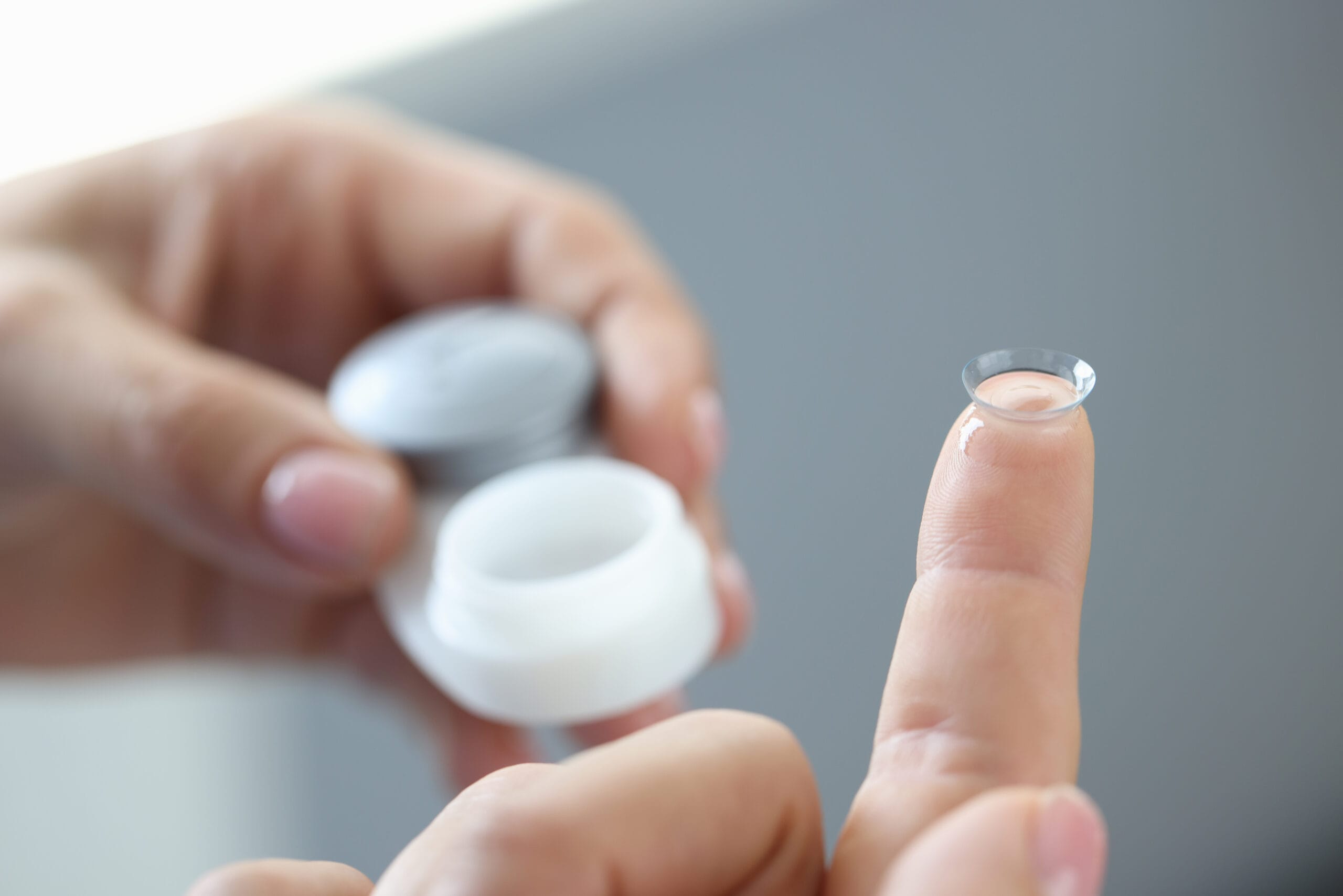
Though it includes a critical phase of adaptation many first-time wearers neglect, making the change from glasses to contact lenses is a thrilling decision. Contact lenses rest straight on the eye unlike glasses, therefore your eyes need time to become used to the fresh feeling.
You might notice little discomfort, dryness, or awareness of the lens in your eye during the first few days or even weeks. These feelings are natural and usually go away as your eyes adjust to the presence of the glasses. Particularly if you are using a fresh prescription or attempting specialised lenses such toric or multi focal, your vision could also change somewhat.
Starting with a few hours a day and slowly raising wear time helps to minimise irritation and guarantee the health of your eyes; following your ophthalmologist’s advised wearing schedule is vital. Missing this stage can cause weariness or perhaps problems like infection or dryness. Many users need time to adjust to the process of inserting and taking out lenses as well; though difficult initially, this gets second nature with practice. This is also a time to master appropriate hygiene: washing hands before handling lenses, employing the right solution, and safely storing them if not using dailies.
Being patient with the procedure and regularly meeting scheduled followups with your optometrist will help the shift to be more natural. The adaptation period is transient ultimately, and most wearers discover that contact lenses provide a fresh degree of independence after the first obstacles are conquered.
From Glasses To Lenses 3: Learning Proper Lens Hygiene
Mastering good lens cleanliness is nonnegotiable when changing from glasses to contact lenses. Contact lenses sit straight on your eye, unlike glasses, so any slip in cleanliness might result in eye infections, discomfort, or even ongoing eyesight issues.
First of all, always wash and dry your hands thoroughly before touching your lenses. This easy measure stops the transmission of pollutants, oils, and dangerous bacteria. Daily cleaning of your reusable lenses using a suggested solution is absolutely necessary; never water or saliva, which can introduce microorganisms. To prevent bacterial accumulation, make sure your lens case is likewise kept clean and replaced every three to six months.
-
Product on sale
 GEOLICA CRAZY LENS RED CP-F331.82USD
GEOLICA CRAZY LENS RED CP-F331.82USD -
Product on sale
 GEOLICA CRAZY LENS WHITE CP-F131.82USD
GEOLICA CRAZY LENS WHITE CP-F131.82USD -
 Miru 1Month Menicon50.91USD
Miru 1Month Menicon50.91USD -
 Miru 1-Day Menicon Upside Daily Disposable Lenses52.73USD
Miru 1-Day Menicon Upside Daily Disposable Lenses52.73USD -
Product on sale
 Miru 1-Day Menicon Flat Pack Daily Disposable LensesOriginal price was: 52.73USD.30.00USDCurrent price is: 30.00USD.
Miru 1-Day Menicon Flat Pack Daily Disposable LensesOriginal price was: 52.73USD.30.00USDCurrent price is: 30.00USD. -
 Alcon TOTAL30 for Astigmatism Monthly52.73USD
Alcon TOTAL30 for Astigmatism Monthly52.73USD
Daily disposable lenses are the most simple to handle from a hygiene perspective as you discard them after every usage; yet, clean hands are still a need. Unless otherwise prescribed, refrain from sleeping in lenses and adhere to the wear schedule your optometrist gives. Eye dryness, redness, and serious infections like keratitis might result from overuse of lenses or skipping of cleaning regimens.
Should irritation develop, stop trying to press through — take off the lenses and seek expert advice. Good cleanliness practices become second nature over time, but consistency is essential from day one. Incorporating contact lenses into your regular schedule is liberating but also entails responsibility. Good care guarantees safe and pleasant daily use as well as clear vision.
From Glasses To Lenses 4: Cost Considerations
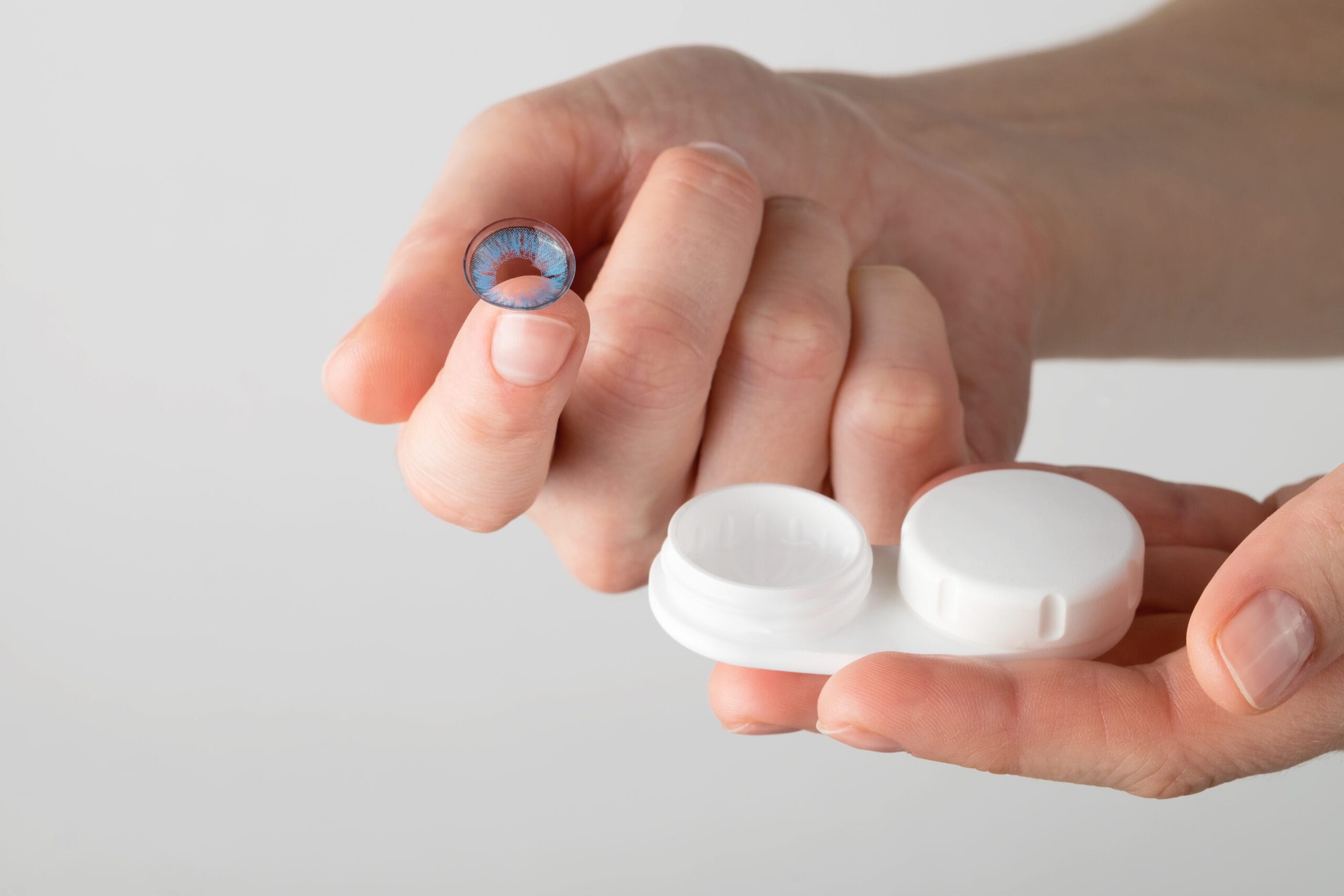
Switching from spectacles to contact lenses seems like a little modest lifestyle improvement, but price is a major factor not to be overlooked. While a single set of prescription glasses usually represents a one-time expense that could last for years with diligent maintenance, contact lenses have ongoing expenses.
Daily disposables, for instance, are the most sanitary and convenient answer yet over time they are also the most costly — ideal for individuals with changeable finances or irregular lens wearers. Although they need a container and a lens solution, monthly or biweekly lenses provide a cheaper alternative that enhances the monthly or biweekly cost.
Furthermore contributing to the original cost when changing is lens fittings, routine eye exams, and possible trial lenses. Many individuals decide to keep a spare set of glasses, which raises the overall cost. Although insurance might cover some of the cost, coverage varies; some policies only help either glasses or lenses, not both.
Also note that specialist lenses for astigmatism or multifocal requirements often come at a higher price. Weigh the long-term financial commitment of contact lenses against the initial expense of glasses before changing. Knowing your budget and lifestyle will assist in deciding if the change is justified and guarantee that you are not just picking what appears best but also what makes financial sense over the long term.
From Glasses To Lenses 5: Getting Fitted Properly
One of the most important first steps in changing spectacles to contact lenses is an accurate fitting by an eye care professional. Even if your glasses prescription is current, contact lenses are not a one size fits all fix; it does not straightly link to contact lens sizes.
Your tear film is assessed, your corneal curvature is assessed, and your eye is measured during a contact lens fitting to guarantee correct lens fit and crisp eyesight. Based on your lifestyle, vision needs, and any underlying eye conditions, your ophthalmologist will determine the best lens type — whether daily disposables, monthly lenses, or specialised lenses like toric or bifocal.
-
Product on sale
 GEOLICA CRAZY LENS RED CP-F331.82USD
GEOLICA CRAZY LENS RED CP-F331.82USD -
Product on sale
 GEOLICA CRAZY LENS WHITE CP-F131.82USD
GEOLICA CRAZY LENS WHITE CP-F131.82USD -
 Miru 1Month Menicon50.91USD
Miru 1Month Menicon50.91USD -
 Miru 1-Day Menicon Upside Daily Disposable Lenses52.73USD
Miru 1-Day Menicon Upside Daily Disposable Lenses52.73USD -
Product on sale
 Miru 1-Day Menicon Flat Pack Daily Disposable LensesOriginal price was: 52.73USD.30.00USDCurrent price is: 30.00USD.
Miru 1-Day Menicon Flat Pack Daily Disposable LensesOriginal price was: 52.73USD.30.00USDCurrent price is: 30.00USD. -
 Alcon TOTAL30 for Astigmatism Monthly52.73USD
Alcon TOTAL30 for Astigmatism Monthly52.73USD
Comfort and eyesight in actual circumstances can be evaluated using a trial lens. Finding the perfect match could require trying a few different cultivars or brands. Your ophthalmologist will also demonstrate appropriate lens insertion and removal, expose you to hygiene practices, and monitor your eye response over time.
Especially early on, frequent followups help find symptoms of infection, dryness, or soreness. Beyond merely comfort, a professional fitting will help you to protect your eye health and guarantee your switch to contacts is painless and efficient. Ignoring this step could result in eye irritation, damage, and even persistent damage. The perfect fit literally changes everything.
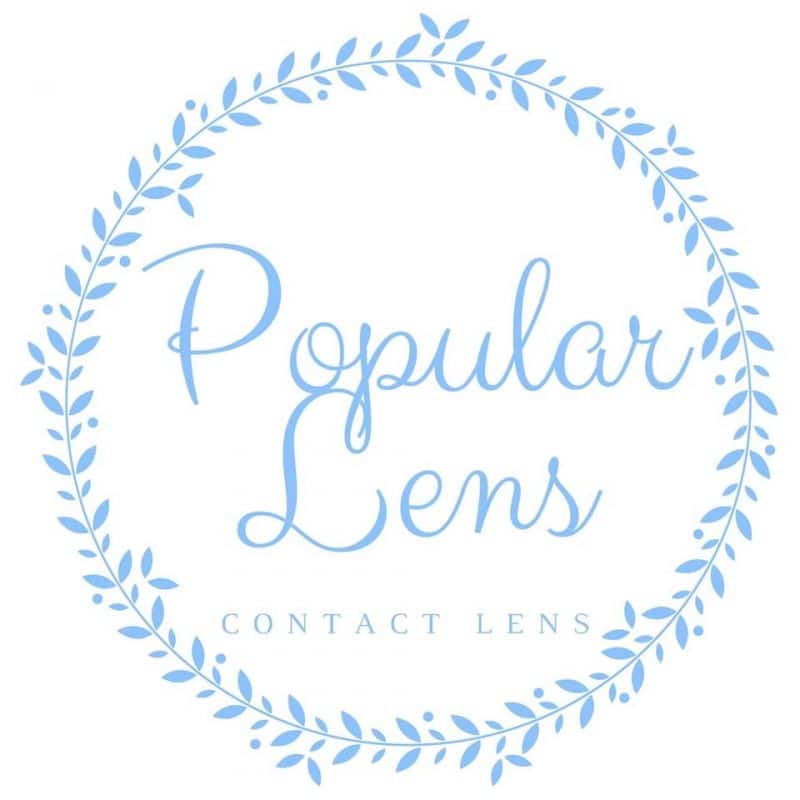
We are a company of optometrists & opticians. We focus on providing our customers with their preferred optical products to improve visual acuity and enhance their quality of life. At PopularLens, you will find niche and exclusive brands.
 Free Shipping within SG With Order Over $80
Free Shipping within SG With Order Over $80 Lowest Price Guarantee
Lowest Price Guarantee
